Did you know there are 17 species of hedgehog in the world? Most species of hedgehog are nocturnal, which means they sleep throughout the day and are active and awake during the night. Hedgehogs generally have poor eyesight so they use highly developed senses of smell, touch and hearing to navigate and explore and find food with. They spend a lot of their time searching for food, they mostly eat invertebrates, worms, slugs, snails and insects but they have been known to also eat carrion, mice, eggs and even snakes. Some hedgehogs have developed an immunity to snake venom and have been known to kill and eat vipers.
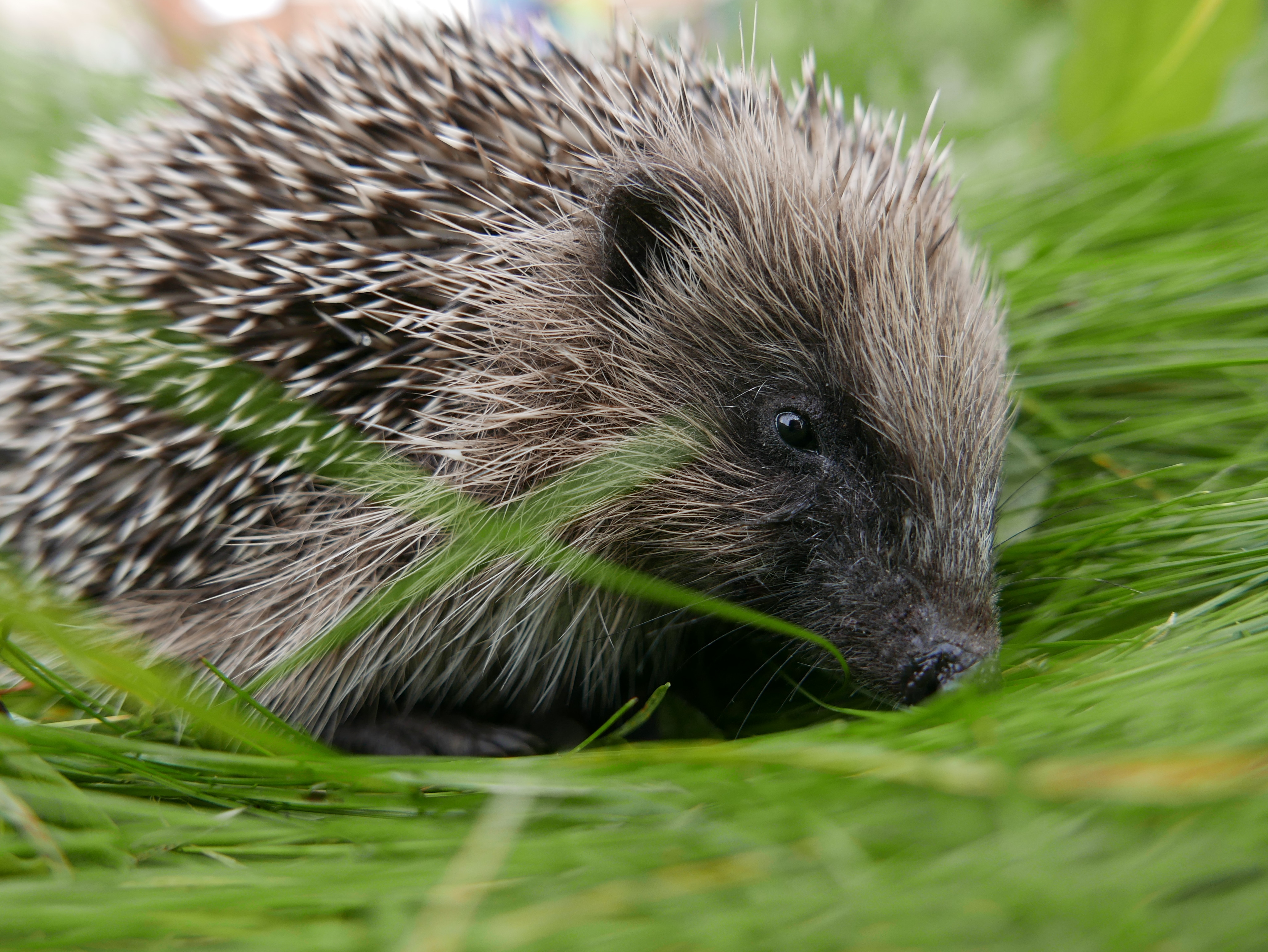
They have to eat as much as they can at the end of the summer and autumn months as they need to create additional layers of body fat to help keep them warm when they hibernate over the winter and colder months. Contrary to popular believe hibernation isn’t like sleeping, when you sleep your body and brain are still active in many ways however during hibernation all brain and body activity slows down to absolute minimal so very little energy is used to stay alive. When a hedgehog hibernates their body temperature drops and their heartbeat, breathing and metabolism slow right down. Most UK hedgehogs will hibernate from December to March to avoid the worst of the cold weather and lean months.
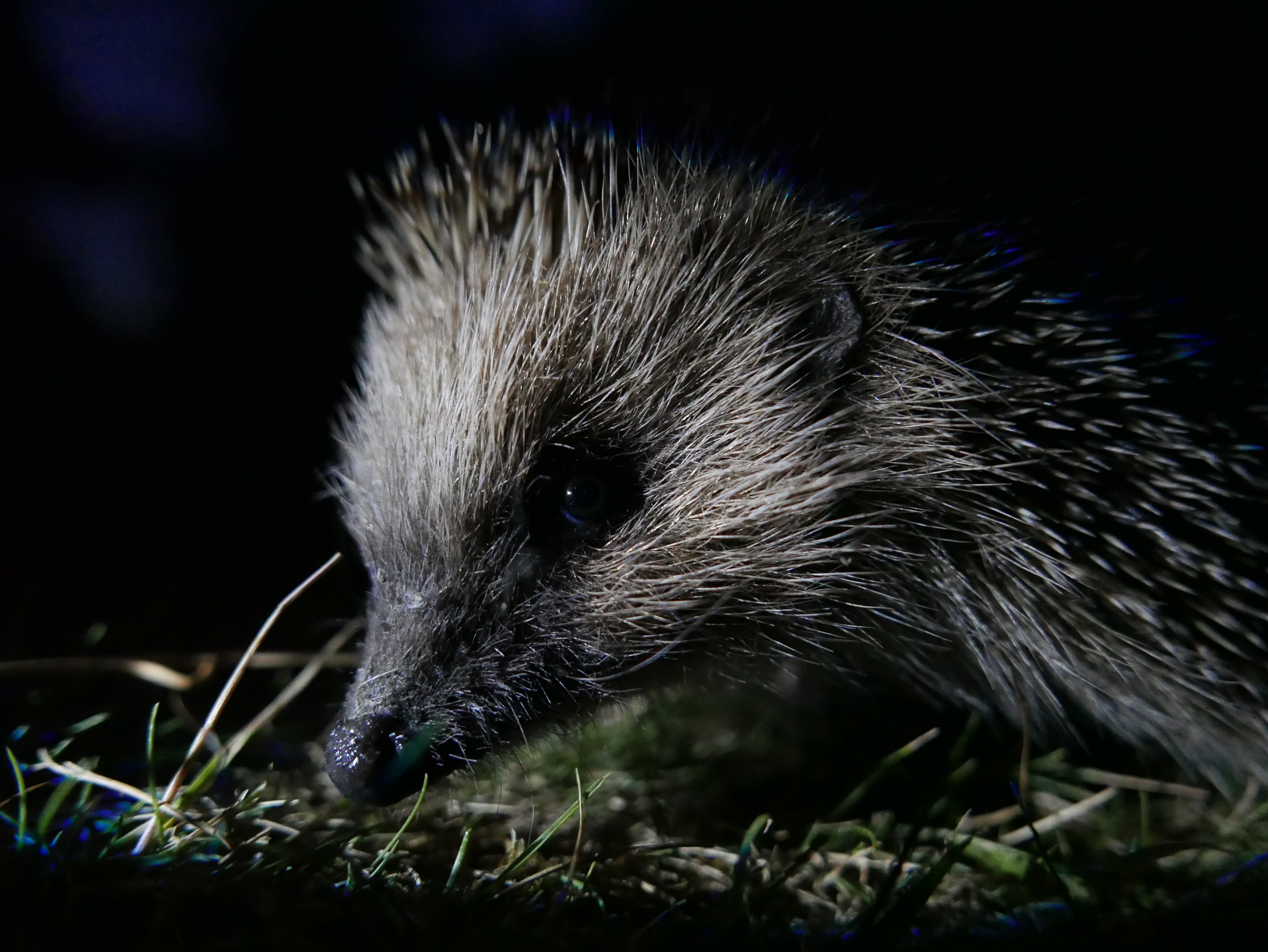
Hedgehogs are mammals which means they are warm blooded animals that have a back bone, mammary glands and fur or hair. A hedgehogs spines are actually modified hollow hairs made from keratin which is the same material our fingernails and hair are made from. An individual hedgehog can have between 5000 to 8000 spines which they use as protection from predators. When threatened they can also tuck up into a ball and using their back muscles to prickle the spines defensively. Baby hedgehogs are born with spines hidden under a fluid filled layer of skin (to protect poor mummy hedgehog when she’s giving birth.) They start of soft and supple and harden as the hedgehog gets older.
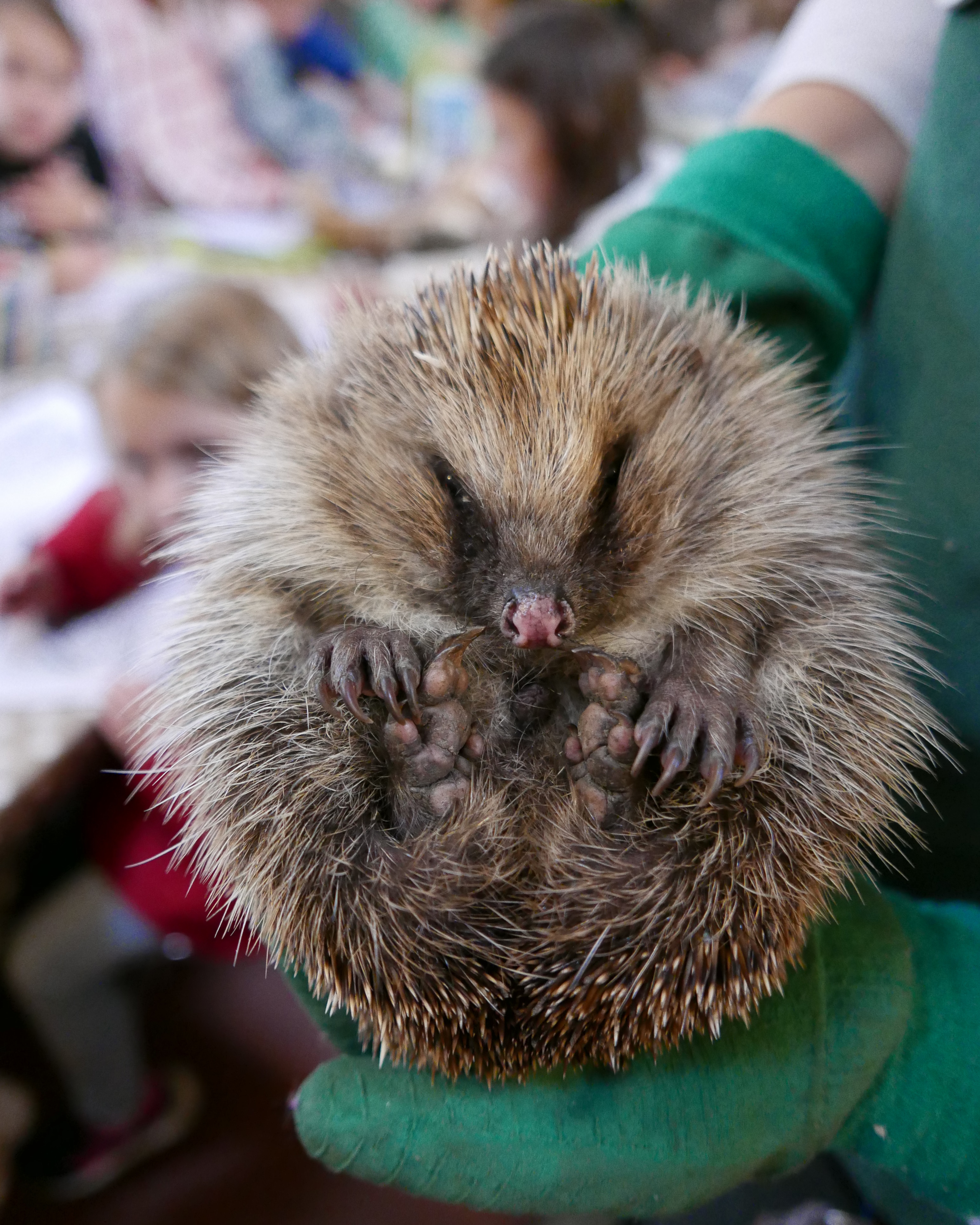
If you find or see a hedgehog out and about in the day or winter months then the best thing to do is observe it carefully. If it’s an adult moving with purpose and seems uninjured then its best to leave it be. However if it is particularly small or young and seems injured or distressed then it’s best to call your local vet or go to: https://www.britishhedgehogs.org.uk/found-a-hedgehog/ for advice and guidance.
You can find lots of fun and interesting activity ideas below to learn more about these wonderful mammels.
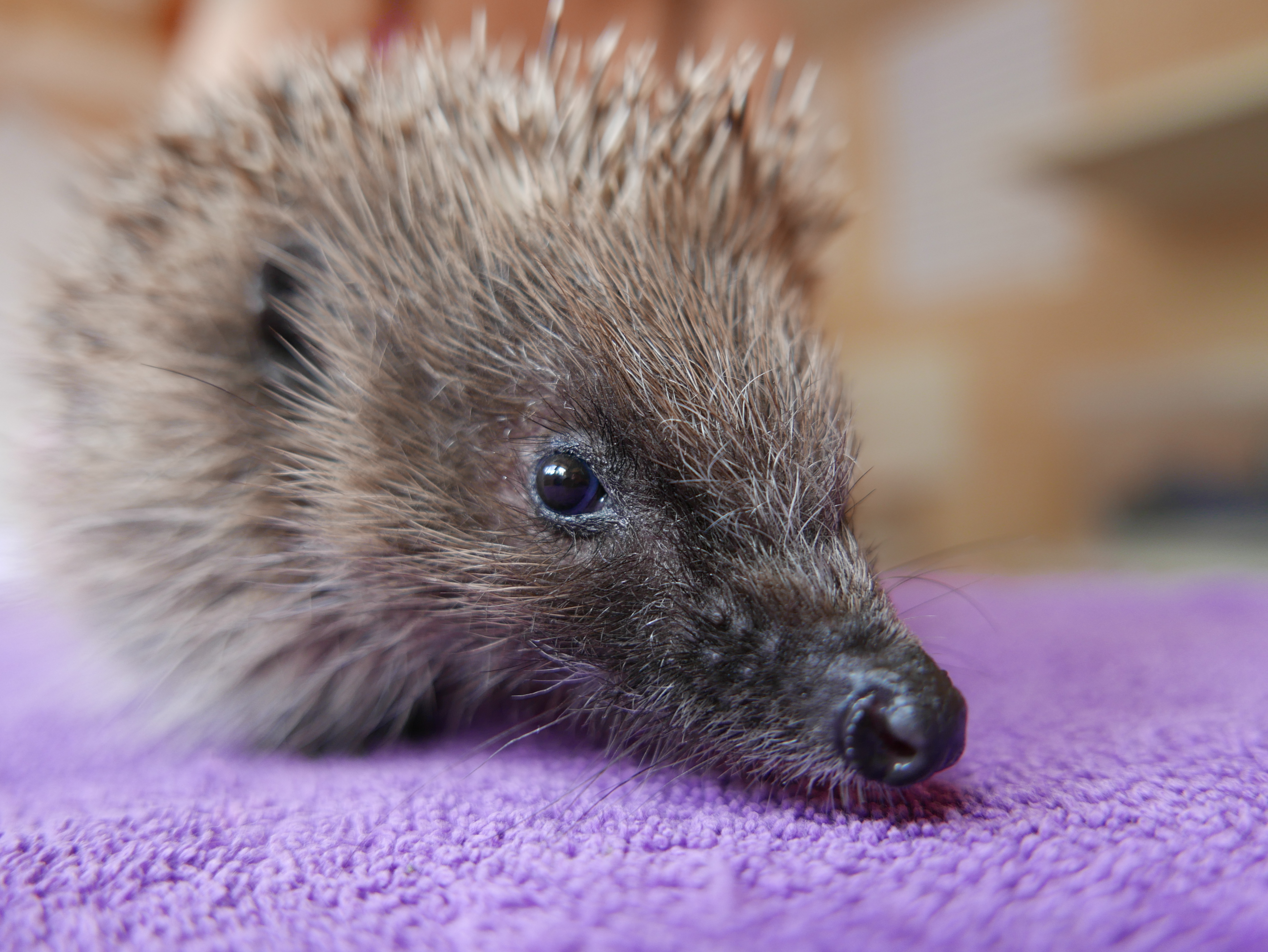
1. Look for signs of hedgehog activity
You can often spot signs of hedgehog activity (and other mammals) if you know what to look for. Tell tale pawprints are often easy to spot in soft muddy areas or after fresh snow. The Wildlife have a useful photo guide to identifying animal tracks here which you can use to help identify any prints you might find. A slightly gross but also surprisingly easy way to track mammals is via their poo*. Many species leave very distinctive droppings that you can identify using the Wildlife Trusts handy photo guide here. Once you feel confident identifying droppings you can also have a little fun trying their Poo Dunnit quiz here.

*Please don’t touch or handle poo or droppings as they can harbour pathogens like bacteria and viruses. It’s best to observe them safely by telling children not to touch them or get too close.
2. Explore the world at night
Just as the rest of the world is going to bed the creatures of the night begin to emerge. This is a wonderful time to observe and discover the hidden world of nocturnal creatures you normally never see like hedgehogs. All you need is a torch, warm sensible clothing and a safe space to explore. We also like to have hot chocolate and a blanket with us to warm up with if it gets too chilly. As darkness falls resist the urge to turn your torch on straight away, instead sit somewhere quietly and comfortably and listen. You are more likely to hear the tell tale noises of animals rustling around you than see them straight away. It’s a good opportunity to talk about how nocturnal creatures use highly developed sense of hearing and smell or specially adapted eyesight to sense and navigate the world around them. You can talk about what you can see, hear and feel in the dark and carefully feel things like grass, plants and trees to explore the different textures and smells.

3. Make a hedgehog print tracker
You can make a mammal print tracker to capture hedgehog or other mammal paw prints. For this you will need a large piece of recycled cardboard or poster board, paper, non toxic paint, cooking oil and hedgehog or small cat biscuits. First fold the cardboard into a triangular tube and tape the sides together to form a tunnel. Next cut a length of cardboard to fit the bottom of the tunnel and tape some paper across the middle of the panel making sure to leave each end uncovered.

Place the hedgehog or cat biscuits in the middles of the panel as bait to tempt a mammal into the tube. Then mix some non toxic paint with cooking oil and paint either end of the panel. The cooking oil will stop the paint drying out too quickly. Then place your tracker on the ground in a sheltered place like a bush so it doesn’t blow around, you could use stones on either side to hold it in place. Leave your mammal tracker out overnight and check on it first thing in the morning. When an animal walks through the tube they will tread in the paint and track foot prints across the paper strip. The Wildlife Trust have a useful photo guide to identifying animal tracks here which you can use to help identify any prints you might find.

4. Long grass hedgehogs
Grass hedgehogs are so simple and quick to make. They also make great story props and toys for imaginative play and role playing games. All you need for this activity is some long grass (you could use fresh or dried), a piece of string or wool and a piece of paper and pen. Simply fold a large handful of long grass in half and then tie it securely at the folded end with a piece of string to form your hedgehogs nose. Finally draw an eye onto the paper, cut it out and stick it on your grass hedgehog.

5. Egg box hedgehogs
A simple and easy to set up activity that helps develop fine motor skills. Older children can make their own hedgehogs and younger children will enjoy pushing and pulling the ‘spines’ in and out of the box. Simply draw a face onto the side of an egg box, then push sticks into the to make the spines. You can use natural sticks you find on a walk/in the garden or lollipop sticks. Sometimes it helps to make the holes by pushing a sharp pencil through the top first.

6. Grow a grass hedgehogs
Or how about growing your own grass hedgehog. Its a fun and easy activity to do, all you need is a pair of old tights, some compost and grass seeds. Simply cut the the foot end off of some tights, fill them with the compost and sprinkle in some grass seeds. Then tie up the top and cut off the loose end. Draw, paint or stick on some eyes. Then water your hedgehog regularly and wait to see the first grass shoot spines emerging. Once your hedgehog has a fine head of grassy spines you could have fine practising fine motor skills and role play giving your hedgehog a haircut.

7. Nature art hedgehogs
Nature art (also sometimes called land art) is a wonderful nature activity that encourages creativity and fine motor skills in children of all ages and abilities. All you need is some imagination and natural materials to make pictures of animals, shapes and patterns or letters, numbers and words.

You could have a nature treasure hunt in the garden or go on on a nature walk to find natural materials to use like leaves, sticks, stones, shells, grass, plant stems, bark, fallen fruit, nuts, seeds and flowers*. *But pretty please don’t pick any wild flowers, only collect ones you have grown yourself or fallen ones you find on the floor.
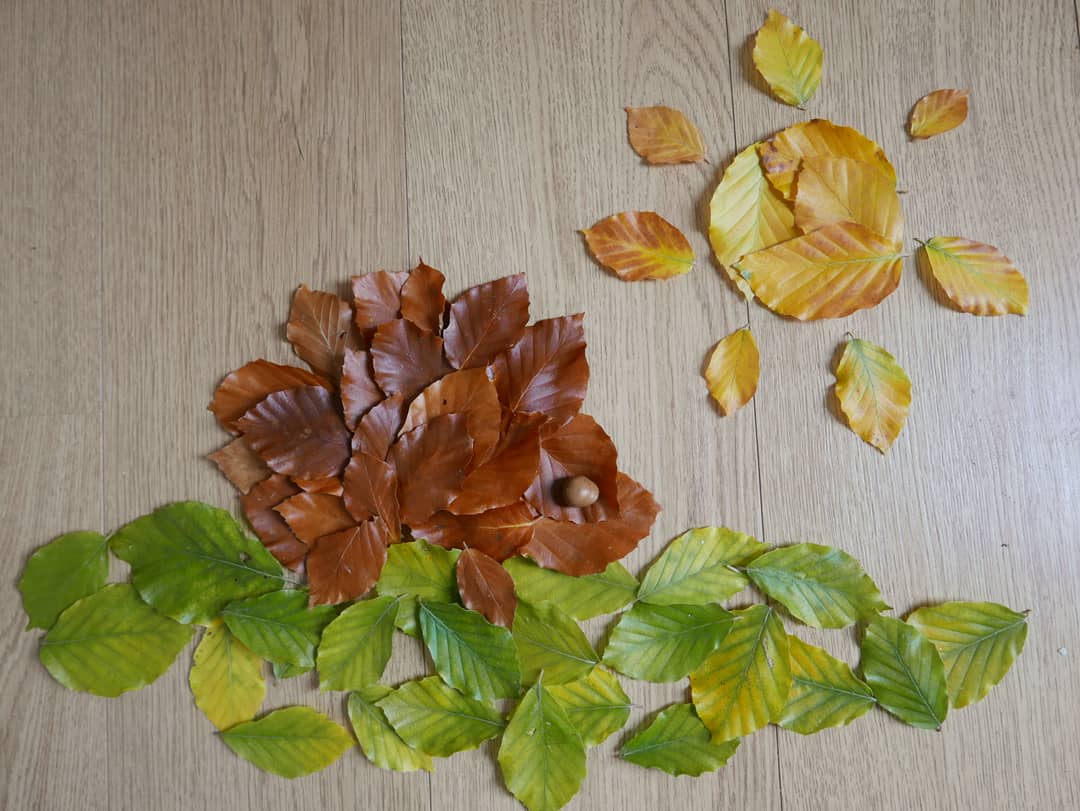
Simply arrange them on the floor or stick the leaves and sticks onto a piece of paper to make your hedgehogs shapes. Or you could combine the leaves with chalk or pencil drawn hedgehog outlines. On wet or windy days you could bring your materials indoors to arrange into pictures.
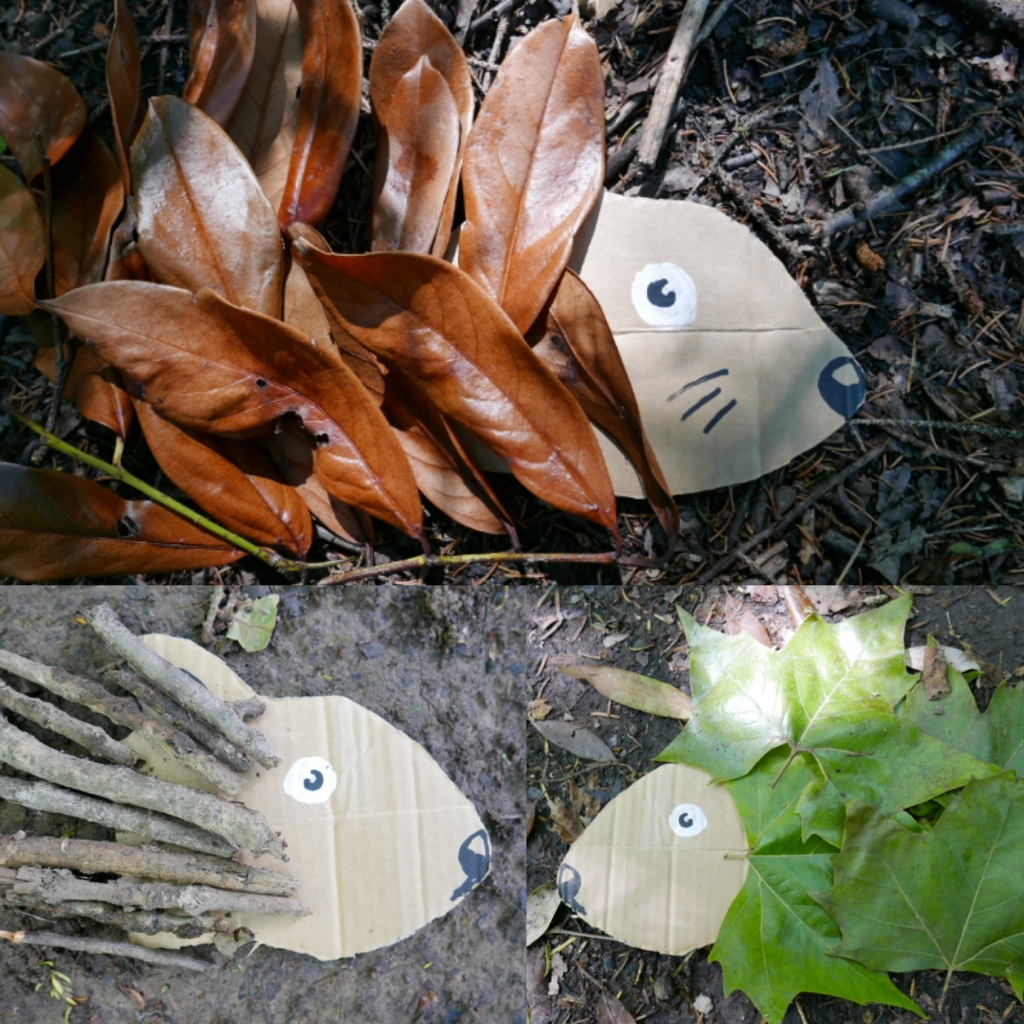
You can also use cardboard hedgehog faces as play prompts. Simply draw some hedgehog faces onto a piece of cardboard and then cut them out. When you have cut out the faces you can take them on a woodland walk and place them by any interesting natural objects you find, to give your hedgehogs fun and interesting spines and bodies.
Alternatively you could use chalk to draw hedgehog faces on paths and pavements for the children to then decorate with leaves, sticks and found materials. How about taking photos of all the characters you create so you can turn them into artwork, cards or pictures.

8. Hedgehog clay figures
Hedgehog figures are tactile and engaging to make and encourage fine motor skills and creativity in children of all ages. All you need is some clay, playdough or salt dough to shape into the body of a hedgehog. Then you can make the hedgehogs spines by carefully pushing natural found materials like leaves, long grass, plant stems, bark or stones into the clay, playdough or salt dough. Alternatively you could also use materials you find in the house like, paper, cardboard, string, spaghetti, pasta or cut up packaging. Once your figures are finished you can leave the bodies to dry out before using them in role play, imaginative play or as story props. Just please be aware of the choking hazards of any materials you may use in relation to small children.

9. Paper plate hedgehogs
A folded paper plate makes a great base for a hedgehog figure. Simply paint the paper plate brown and then cut the edges into a fringe to form the spines. You can then paint or draw on the hedgehogs eyes and nose. If you are feeling more adventurous you could cut the paper plate at one end to give your hedgehog a more defined nose and face shape.



10. Hedgehog nature art frames.
Nature art frames are really simple to make, fun to play with and create some wonderful images. You just need an old piece of cardboard a pen and some scissors. We hate to waste anything and recycling and reusing materials is one of many small things we can all do to help the environment. So instead of chucking used cardboard boxes we like to find ways to use them in crafts and activities.

All you need to make a nature frame is to draw a simple shape or picture like a hedgehog onto cardboard. Your shape or picture should have at least 1- 2 easy to cut out sections that you can then look through. When you have cut out the see through sections of your frames, you can take them outside to hold them up against any of the interesting natural objects, textures, patterns and shapes you can see, like the sky, trees, flowers and grass for example.

11. Pine cone hedgehogs
Even simpler to make are pine cone hedgehogs. Simply find a couple of pine cones and then turn them into hedgehogs by adding some paper or fabric eyes, noses and or ears. Again these are great to use in role play games, imaginative play or as story props.

12. Hedgehog potato prints.
Potato printing is a simple activity for children of ages, all you need is a potato cut in half, a bit of inspiration and some paint to get started. They make great invitations to play for children of all ages and you can use the potato prints to make patterns, pictures, cards or recyclable wrapping paper.

To create a hedgehog print you will need to carefully cut small triangular slithers all around the edge of a potato half. Then cut one end of the potato half into a simple triangle to form the hedgehogs nose and face. Press the hedgehog potato shape into brown paint and print onto your surface. You can then add the hedgehogs eyes and noses to your prints using paint or pens.

13. Hedgehog nature weaving board
A piece of recycled cardboard also makes a great base for a threading and weaving nature hunt board. All you need to do is ask the children to draw or paint simple hedghog picture onto the cardboard. (Or you could do it for them if they are too little). Then carefully poke a pencil through the cardboard at different points to make holes for the children to poke, thread and weave found natural materials through. You could use leaves, long grass, plant stems, bark, fallen fruit, nuts, seeds and flowers*. *Pretty please don’t pick any wild flowers, only collect ones you have grown yourself or fallen ones you find on the floor.

14. Make a hedgehog house
Finally how about making a hedgehog house or shelter for your garden. We used an old plastic box for ours, we filled it with grass and leaves for nesting material and propped it up on bricks to allow room for the hedgehog to safely crawl in and out. There are other ways you can help hedgehogs in your garden. Leaving out dishes of water in hot weather and making holes in and under fences to allow them to travel through gardens are the most useful. Also avoiding using pesticides and making sure that ponds and water have ramps in them to allow any wildlife that falls in a way to climb out.

If you like this you might like to try:
20+ ways to make a home for wildlife


Exploring trees and woods 30+ activity ideas

33 bird activity ideas + fun facts


17 thoughts on “14 Hedgehog activities and fun facts”